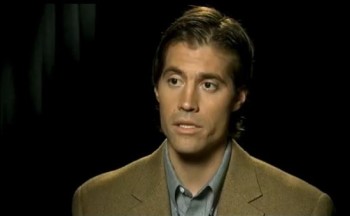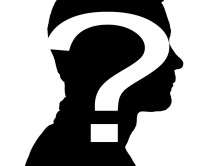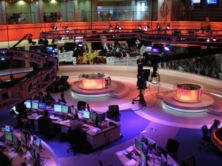
James Foley in 2011. (Credit: Wikipedia/CNN)
It was ruled to be OK for Australian newspaper The Daily Telegraph to publish a picture of James Foley just before his beheading by terrorist group ISIS, the Australian Press Council says.
The Telegraph, owned by News Corp Australia, used the image on its Aug. 21 front page with the headline “Barbarians behead US journalist in grotesque propaganda clip. PURE EVIL.”
See the image below, via theConversation.com:

The Telegraph was not alone as an Australian paper in using an image of Foley from the propaganda video, iMediaEthics noted at the time. The Telegraph, the Herald Sun, the Courier Mail, the Age and the Sydney Morning Herald all published images from the video.
iMediaEthics has asked the press council if it received complaints against any other news outlets over the Foley coverage.
“The Council received more than one complaint about photographs of James Foley and these related to The Daily Telegraph and other publications,” a council spokesperson told iMediaEthics.
When asked if the council had rulings about other publications, the spokesperson said: “A complaint or complaints against any one publication are considered as a separate matters. The only one completed by the Council’s processes so far about that photo is The Telegraph one. ”
The council’s Feb. 16 ruling argued that despite the potential offensiveness of the photo, the image was in the public interest.
“There was a very strong justification in the public interest due to the extreme behaviour about which it was reasonable to believe readers should be well-informed,” the council concluded.
The newspaper could have used the photo on the inside of the paper, the council noted, but overall, the Telegraph didn’t break the council’s guidelines, it wrote.
“The image was likely to cause substantial offence and distress to a significant number of people,” the council argued. “This impact was due largely to the close proximity of the knife to Mr Foley’s neck and thus to what readers might have perceived as the actual beheading.”
As alternatives to the photo and placement chosen by the Telegraph, the council suggested an inner page or a different photo from the ISIS video. “This would have reduced the risk of offence or undue harm to children and others including those who merely saw it in passing,” the council advised.
Despite giving the newpaper the OK in its photo choice, the council warned that in future cases there may not be as much strong public interest allowing such a graphic photo.
The council noted that the Telegraph defended publication of the photo as necessary to show ISIS’s “wickedness” and “horror.”
“It likened the image and its impact on public opinion and policy to a famous image published during the Vietnam War of a young girl running naked after being severely burned by a napalm attack,” the press council reported that the Telegraph said.
Even though the council didn’t rule against the newspaper, the Telegraph published the council’s decision on its website, Australian media news site Mumbrella noted.




